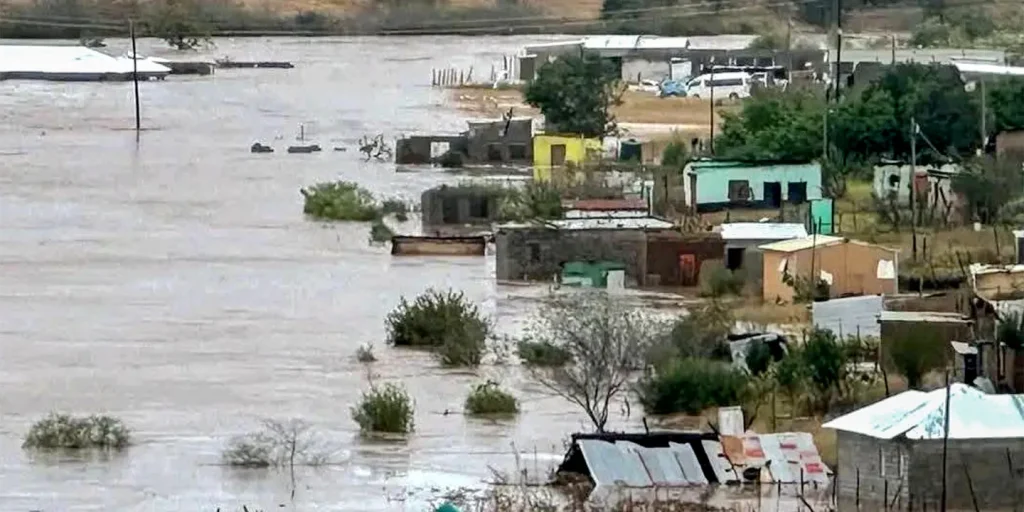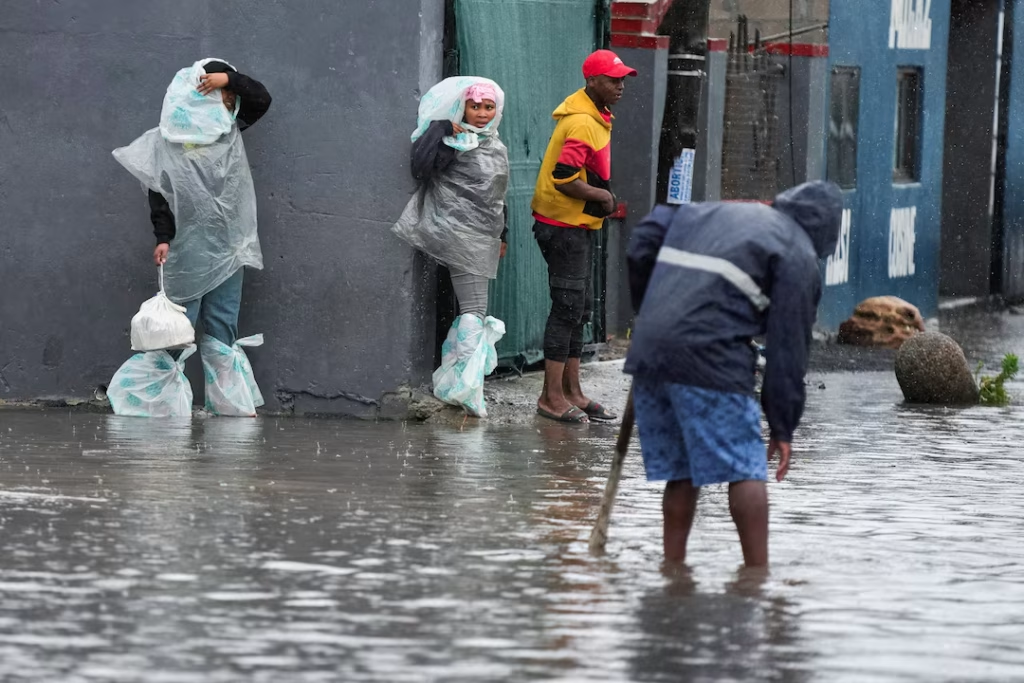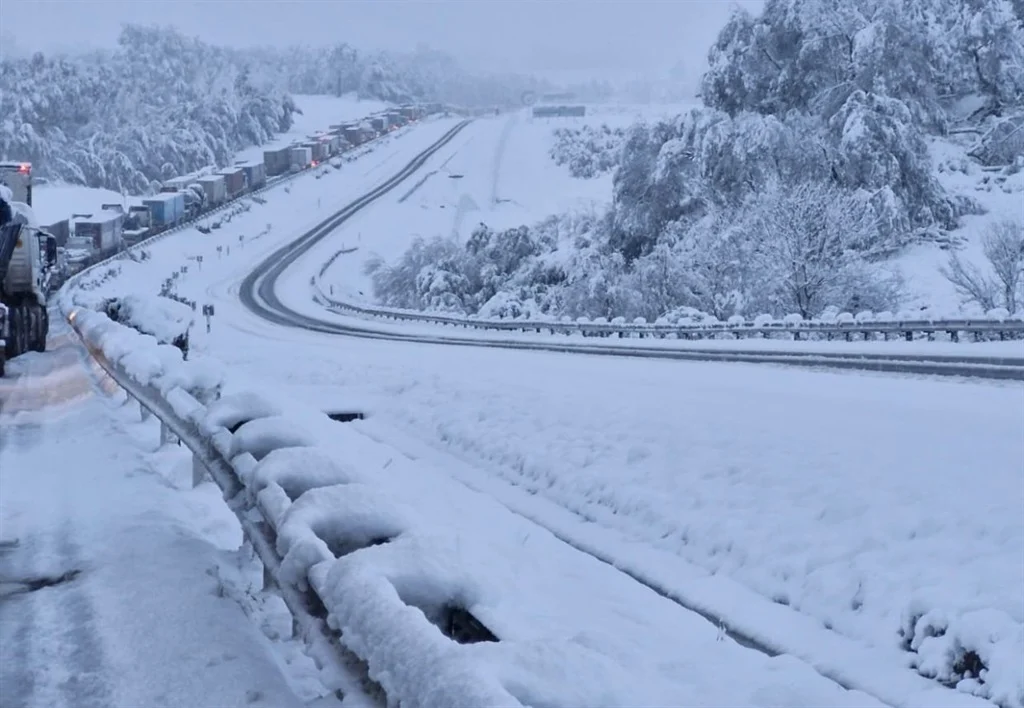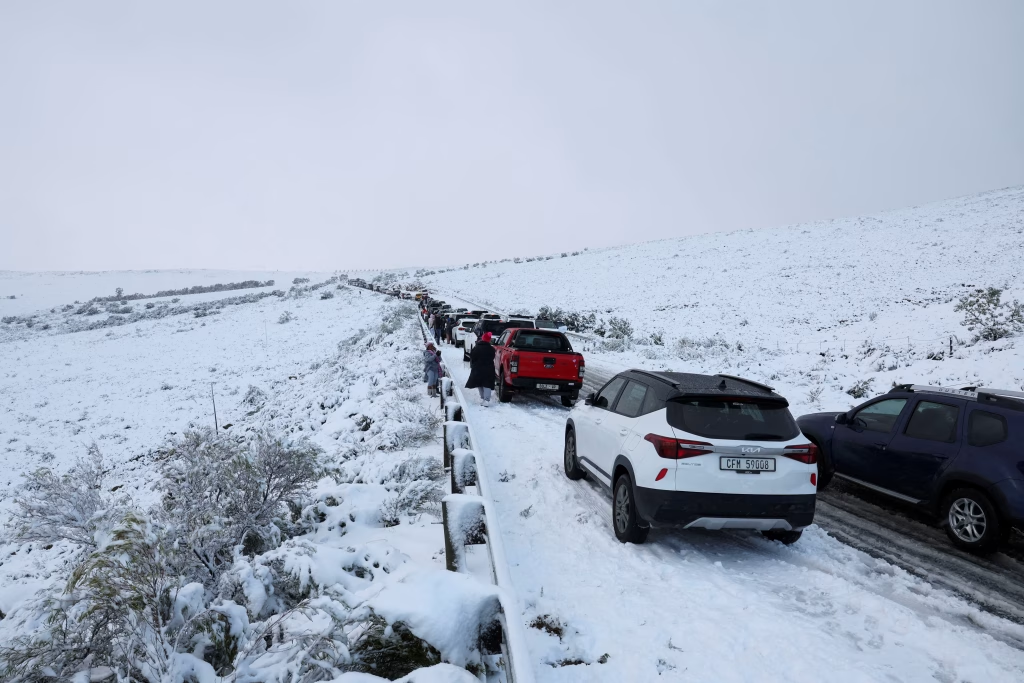Since the weekend, a polar-like cold front blanketed parts of KwaZulu‑Natal, the Free State, and the Eastern Cape with heavy snowfall.
Winter Storm Wreaks Havoc in South Africa’s Eastern Cape

A harsh winter cold front sweeping across South Africa has caused widespread disruption, claiming lives in a tragic road accident along the N2 highway, cutting power to hundreds of thousands, and triggering deadly floods and landslides, particularly in the Eastern Cape.
Snow, Roads Closed, Power Outages
Since the weekend, a polar-like cold front blanketed parts of KwaZulu‑Natal, the Free State, and the Eastern Cape with heavy snowfall. Authorities have closed key mountain passes and sections of the major N2 highway—forcing drivers to navigate icy roads or detour entirely.
In the Eastern Cape, extreme conditions led to a fatal head-on collision involving a taxi. “The driver swerved to avoid a fallen tree, lost control, and the vehicle overturned,” confirmed Eastern Cape Transport Department spokesperson Unathi Binqose. Five adults—three women and two men—were killed, and two others seriously injured.
Energy utility Eskom reported “a high number” of outage calls, citing widespread weather‑related failures. Crews were deployed nationwide to support restoration efforts.
Floods Catastrophe in the Eastern Cape
Simultaneously, torrential rains and snowmelt triggered flash floods in the rural Eastern Cape. The province recorded 49 fatalities—43 from floodwaters and six from the bus incident near Mthatha, including students.
A school minibus carrying 13 children and two adults was swept away in river floodwaters near Mthatha on Tuesday. Six young passengers and both adults were confirmed dead; four remain missing and three were rescued by clinging to trees.
Eastern Cape Premier Oscar Mabuyane termed it one of the province’s worst weather-related disasters. He noted that over 58 schools and 20 hospitals had been damaged, and roughly 500 families displaced.
Response and Infrastructure Strain
Disaster response teams were activated across Eastern Cape and KwaZulu‑Natal. Authorities evoked a Level 9 orange weather alert and urged residents to stay indoors as rivers overflowed and roads became impassable.











Damaged bridges and washed-away roads obstructed rescue operations, while power outages further complicated relief efforts. President Cyril Ramaphosa activated the National Disaster Management Centre to coordinate the recovery effort.
Climate Change: A Worsening Trend
This episode continues a disturbing trend: South Africa’s climate extremes are intensifying. A similar event in April 2022 led to nearly 400 deaths and thousands left homeless in Durban after heavy storms that killed numerous residents.
Experts highlight that warmer seas along the eastern coast are fueling more extreme weather, combining intense rainfall with potential winter snowfall—an unusual and dangerous combo.
What Lies Ahead
The South African Weather Service predicts the current system will persist through midweek, maintaining risks ofcontinued snowfall, flooding, and wind damage. One of the largest challenges now is restoring power and clearing debris to reopen vital roadways while accelerating rescue and recovery efforts.
Provincial leaders are calling for swift infrastructural upgrades—better flood defences, stronger bridges, and improved warning systems—to buffer vulnerable communities from future climate shocks.
Subscribe to Our Newsletter
Keep in touch with our news & offers
Thank you for subscribing to the newsletter.
Oops. Something went wrong. Please try again later.










